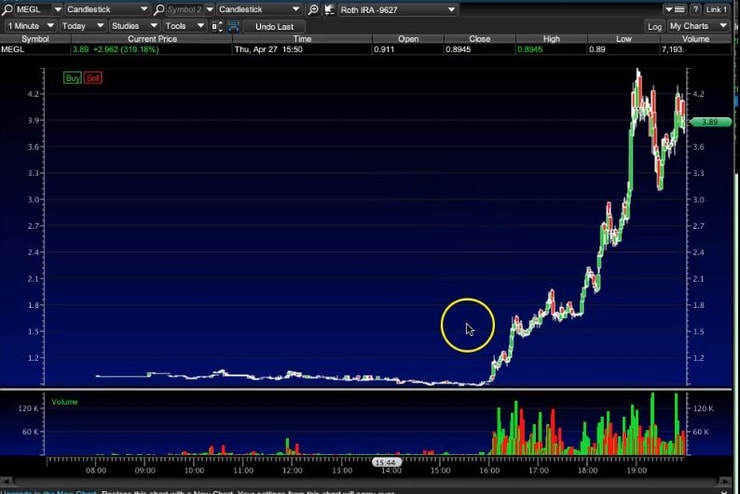I love the fresh smell of Supernovas in the Spring.
How can you not love the market after last week…
Ticker symbol TOP moving 1,000% in a day…MEGL blasting off for a 350% move…and HUDI sky-rocketing by 330%…
But it’s not all sunshine and rainbows.
Especially, if you are one of those traders who decided to short one of those symbols on Friday.
It makes absolutely no sense.
Why would you put yourself in a situation where you’re going to blow up?
But Tim, aren’t most of these stocks crap…and aren’t they destined to crash?
Sure…but that doesn’t mean you have enough capital to sustain the move upwards.
For example, TOP went from $6.53 to $250 in less than 24 hours.
If you saw it go from $7 to $40 you were probably licking your chops as a short-seller…
Surely, $60 would be the level to be short, right? Maybe $80, $120, or $150?
If you shorted at any of those prices you would have gotten destroyed.
And that’s the thing these short-sellers fail to tell you.
It doesn’t matter if you have an 80% winning percentage. All it takes is just one stock to get away from you to do permanent damage on your account.
Look…I take no price in seeing traders lose. And I don’t need a pat on the back for telling you I told you so.
Trading is not a game.
These Supernovas have become wilder and wilder over the last few years…and you simply don’t know when they’ll stop.
That’s why I always prefer to trade them on the long side.
Because all it takes is one bad short to blow up your account.
The problem with short-selling is that they’re fundamentally right.
It’s hard to cover a position when you know eventually that stock will sell-off. And that’s why managing your emotions is so difficult in trades like that.
But they fail to understand one important concept.
You see, very rarely does a stock have a justifiable reason to double, triple, or even quadruple in one trading session.
I mean it makes no sense.
However, if it doesn’t make sense…then why are you trying to use logic when shorting it?
If the fundamentals don’t matter…then why are they all of a sudden going to matter the moment you’re in the trade?
Don’t get me wrong…the fundamentals eventually do catch up…but it’s rarely instantly. It could take a few days or weeks before things normalize. Enough time to blow up a handful of shorts.
The truth is a lot of these moves are manufactured.
Savvy traders are aware of the stock’s structure…they know how many shares are available to short…the total float…and what brokers are charging for locates.
The fact that the stock is a piece of crap is just more gasoline to the fire. They know stubborn shorts will jump in…causing an even greater short squeeze.
That’s why you really need to understand how Supernovas work.
There’s a better way to trade these stocks than trying to short sell them.
It’s a lot safer…and potentially a lot more lucrative.
If you’d like to discover how I trade them then you’ll want to watch this.
As for me, I’ve got all these Supernovas on my radar, and I’ll be watching them this week for potential dip buys.
You gotta love giant short squeezes like $TOP as it should help remind everyone why short selling is so dangerous right now…of course all the “top” short sellers on Twitter will never admit their losses publicly, but this is baaaaaad. Congratulations to all longs, what a ride!
— Timothy Sykes (@timothysykes) April 27, 2023
Please stay safe out there.
P.S. As crazy as these Supernovas have been lately it’s almost nothing compared to what my student Adam Jarrett will be showing you on May 4th.




Leave a reply